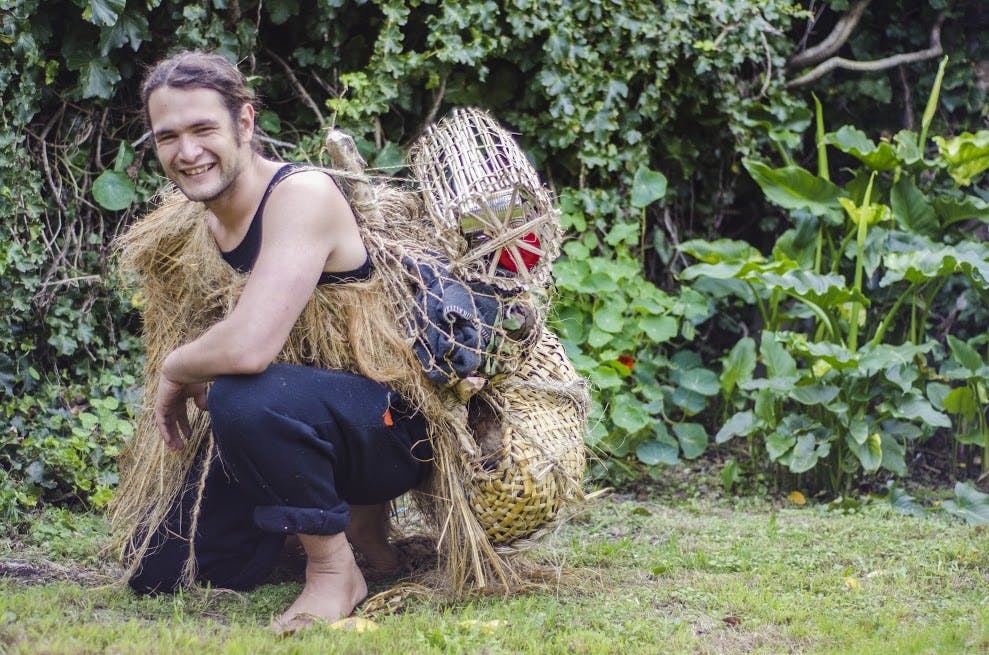When I called Jory Akuhata to interview him for this article, I interrupted him replacing his spectacles frame. He’d recently broken the original and decided to attach a new frame he’d made from bamboo. He’s just the sort of person I’m not. He’d much rather make or fix his own things, than buy replacements.
This isn’t because he’s tight with money, but because making practical things is his hobby. In September he’ll begin hiking the Te Araroa Trail and he plans to complete it using as much home-made gear as possible. He hopes to catch and collect as much food as he can and he plans to do all this as close as possible to the traditional Maori way.
This is not a lightweight task – nor is it always practical.
“Today’s environment is very different to life before Europeans arrived,” says Akuhata. “The concept of going for a hike is new and, if you were to do something strenuous it would be with others, not normally by yourself.”
Akuhata started by making his own pack frame from wood. He’s also carved his own knives, weaved his own food basket, experimented with stove designs and realised how hard it is to make your own dual-use fishing net and hammock.
“I had no idea how much rope I’d need to make a net,” he says. “I use flax and started making the rope too thin and it snapped instantly when I lay on it.
“But I’ve had a lot of practise now and can make a piece double my height in 40 minutes. But it takes a ridiculous amount of rope and I’ve been working on it since Christmas.
“I tried to make a gas burner out of beer cans. I ended up having to drink a can every time I made one and, by the sixth can, I had a pretty good design, but I haven’t since been able to replicate the technique.
“With one attempt I ended up with uncontrollable flames around the pot and there was nothing I could do to stop them, but wait for them to go out. I’m inviting some mates over for a gas burner barbecue, where we’ll each try different preparation methods to see which gets the best result.”
Much of the developments have come through trial and error, which is very much part of the fun for Akuhata. One idea he had to shelve for this trip was the pake – a flax cloak Maori used to wear. “It was a practical cloak they used for everyday jobs like gardening and they would even use it as a shelter. They would sleep sitting up in them and I liked the idea of it replacing my sleeping bag and tent.
“It took forever to make and I wanted to train myself to sit up while sleeping. The first time I took it into the bush was in the Tararuas and it was very wet.
“This thing absorbed water so it felt 100 times heavier. When sleeping it only covered half my body. It would take a tougher guy than me to use this to replace a shelter. There’s nothing worse than a bad night’s sleep – it was a nightmare – I was cold and wet and sick of the sight of it. I later read that to make it water resistant I was supposed to soak it in fat first.”
The pake wasn’t the only piece of kit Akuhata’s had to ditch. His attempts to make a natural drink bottle have had difficulties. “I’ve tried to grow gourds, but they’ve always been too small to use. Maori used to use moa eggs – the nearest thing I could find was an ostrich egg but I dropped it and cracked it.”
Akutaha is determined to tramp the trail with as much home-made gear as possible without it being dangerous. And there are still a few pieces of kit he wants to have a go at before he sets off. He’d like to make his own pot and a bow to help him catch animals. He’s also trying to make shoes from the leaves of a cabbage tree. “They’re not great at the moment,” he says. “They absorb a lot of water which makes them weird and heavy.”








